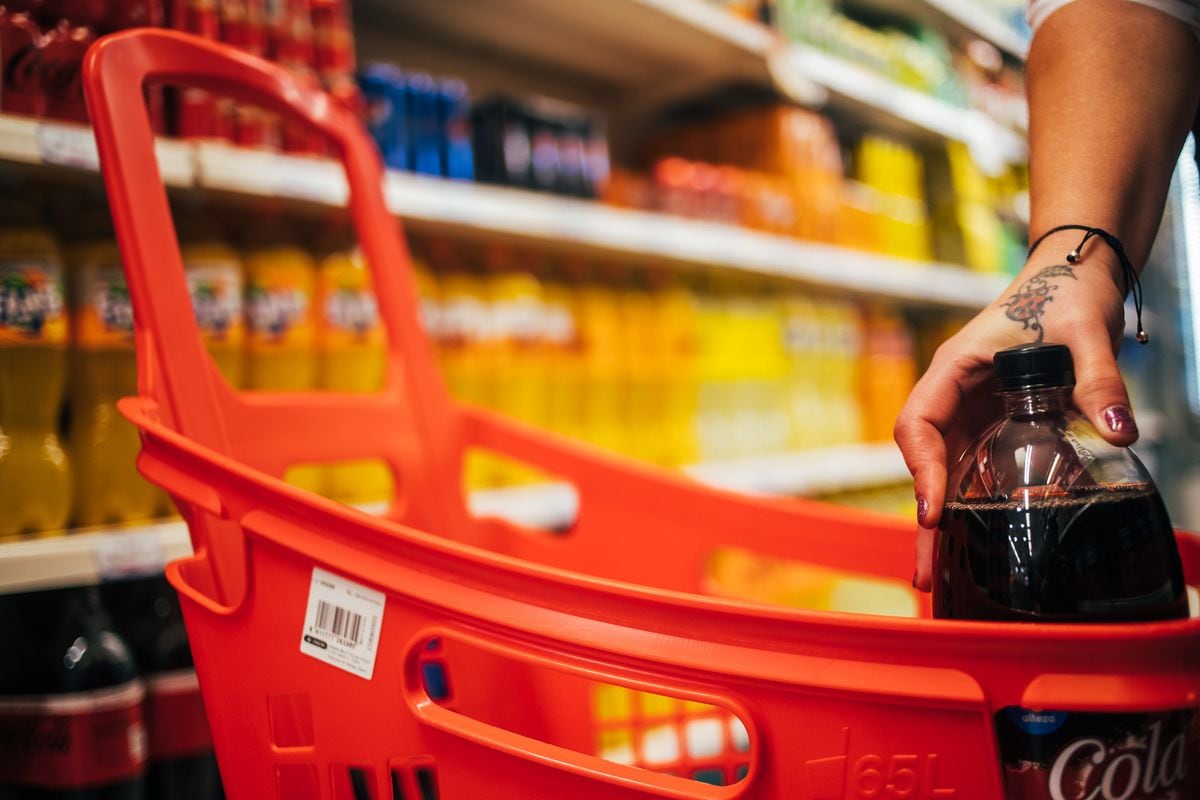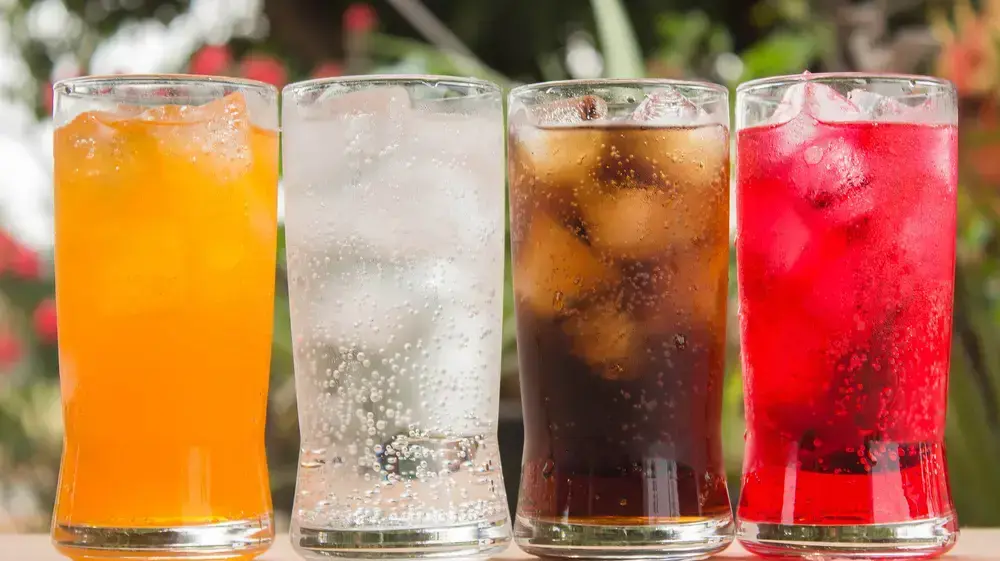Taxes on sugar have become a reference measure to reduce consumption.
One of the great measures taken in Spain in this regard was the rise in VAT on sugary and sweetened beverages in 2021, from 10% to 21% (except in the Canary Islands, Ceuta and Melilla, where this tax does not apply).
A report published this Wednesday by the Esade Center for Economic Policies (EsadeEcPol) evaluates the effects of applying this measure and, according to its conclusions, since the entry into force of this increase there has been a decrease of almost 11 liters, a 13%, in homes with lower economic level.
The figure quadruples to reach 25 liters in low-income households with minor children.
Among middle- and upper-class families, no significant decline data have been found.
Sugar is closely linked to obesity, especially in children, and, by extension, to public spending.
In Spain, pathologies related to obesity account for 10% of this expenditure, according to 2019 data from the Organization for Economic Cooperation and Development (OECD).
This figure places Spain slightly above the rest of high-income countries.
For this reason, Ángel Martínez, one of the authors of the research, proposes it as an effective measure, despite the fact that the reduction only occurs in a third of the groups studied.
Evolution of the increase in the price of soft drinks with the rise in VAT.
A difference is made between the affected and non-affected territoriesEsadeEcPol
The researcher establishes that, although there is no direct reduction in consumption and people continue to buy these products, by paying more, there is compensation.
"At least the damage caused to society in the form of health spending, among other things, is repaired," says Martínez.
Judit Vall, a researcher at the Barcelona Institute of Economics, also interprets this as a positive result, since people with fewer resources are the ones who consume these types of products the most.
The economist develops that the decrease of almost 11 liters contemplates all kinds of soft drinks because the measure affected both, with and without sugar (sweetened).
They have not been able to study whether there is a higher water consumption because, although it is possible to differentiate between bottled and tap water, the latter can be affected by multiple factors and a complete picture cannot be seen.
The report explains that 10 liters is equivalent to about 30 cans.
In addition, the researchers have found a "contagion effect" —as Martínez calls it—, since the decrease in the consumption of these drinks has been accompanied by a 10.5% drop per year in the purchase of snacks such as French fries bag, which is equivalent to about 5 euros per year, the researchers add.
These products were not affected by the VAT increase.
"If a person reduces the consumption of soft drinks, the consumption of what he drinks with them also decreases," concludes the author.
The VAT increase was transferred by 90% to the final price of the product —the one paid by consumers—, which meant a rise of 12 cents per litre.
The measure has been applied to both sugary drinks and sweetened drinks (light and
Zero
).
This has made it possible to avoid the substitution effect that occurs when only one of them is taxed.
Correlation between spending on soft drinks and other potentially complementary products.EsadeEcPol
Catalonia is an example of this.
The Generalitat began in 2018 to apply a specific tax on these sugary drinks, but left the sweetened ones exempt, which led to a transfer of consumers from one to another.
Judit Vall carried out an investigation on the Catalan tax and, among other things, found a 22% reduction in consumption and that this decrease occurred, above all, in drinks in 2-liter containers and not so much in cans.
This conclusion serves the professor at the University of Barcelona as an example of the effectiveness of measures like this.
She argues that large containers are generally purchased when these products are taken frequently, which is the most harmful.
"The consumption that you want to reduce is the usual one, nothing happens either because a person drinks a can of soda on the weekend."
More information:
This Is How Candy Ads Harm Children's Health
The difference in the case of Spain is that a specific tax has not been created to tax sugary drinks, but VAT, an already established tax, has been raised.
That is why there is no difference between sugary and sweetened drinks.
childhood obesity
In Spain, the child population has a prevalence of overweight of 23.3% and obesity of 17.3%, according to data from the study on Food, Physical Activity, Child Development and Obesity in Spain (ALADINO 2019) carried out by the Agency Spanish Food Safety and Nutrition.
Teresa Cenarro, vice president of the Spanish Association of Primary Care Pediatrics (AEPAP), acknowledges that, although these two pathologies occur for many reasons, discouraging sugar consumption with measures like this is a good and important start.
The pediatrician states that the habitual consumption of this type of beverage, in addition to obesity, can cause metabolic disorders such as diabetes due to the increase in sugar in the body, as well as being harmful at the cardiovascular level and favoring the appearance of cavities.
“They do not have any nutritional advantage and they do have all the inconveniences on child health” says Cenarro.
According to the data from the EsadeEcPol report, low-income households with minor children reduced the consumption of these products from 125 liters a year to 100. The vice president of the AEPAP acknowledges that this is a significant decrease, although it is still a high number, he concludes.
The tax in other countries
Spain began to apply this measure in 2021, but other countries had already implemented it years before.
In 2012, France applied a tax of 7 cents to sugary drinks, diet drinks and juices with added sugar.
The measure resulted in a reduction in the consumption of sugary drinks of between 6.8 and 11.4 liters per person per year.
In 2014, Mexico applied it, which designed a tax on sugary drinks of one peso (five cents) per liter and during the year raised it to 1.32 pesos (6 cents).
During the first year, the purchase of these products was reduced by 6% and that of water and non-taxed beverages increased by 4%, according to research by the country's National Institute of Public Health.
The city of Berkeley (California) was the first in the United States to apply this type of tax in 2015 and the price increased by one cent per ounce (3 centilitres) of soft drinks.
In 2017 it was followed by Philadelphia, Pennsylvania, which taxed these drinks at 1.5 cents per ounce.
The following year, it had managed to reduce consumption by 22%.
Teresa Cenarro, vice president of the AEPAP;
Ángel Martínez, author of the EsadeEcpol report;
and Judit Vall, a researcher at the Center for Research in Economics and Health at the Pompeu Fabra University in Barcelona, agree that, although this type of tax is the most effective measure to combat sugar consumption, this battle is multifactorial. and it must be accompanied by educational and advertising plans to enhance its effectiveness.
For Martínez, the natural path of this measure is to include more and more products in this type of taxation.
You can follow
EL PAÍS Salud y Bienestar
on
,
and
.













